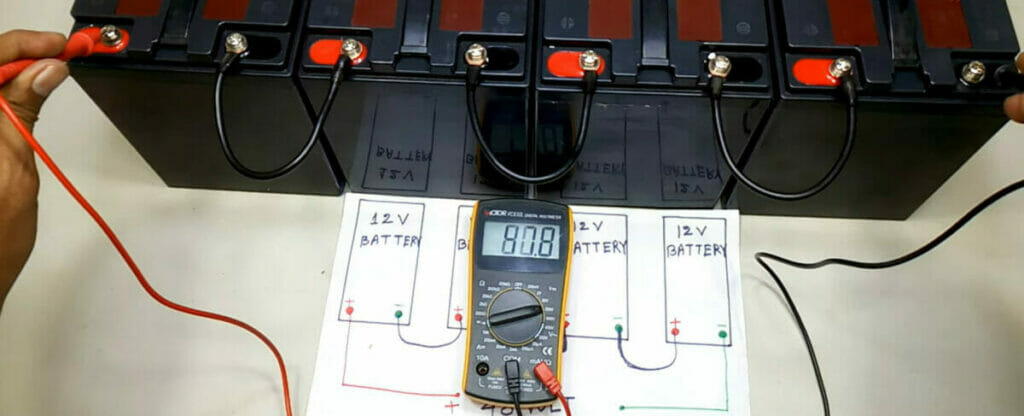How to Wire Batteries in Series (Steps, Safety Tips, Solutions)
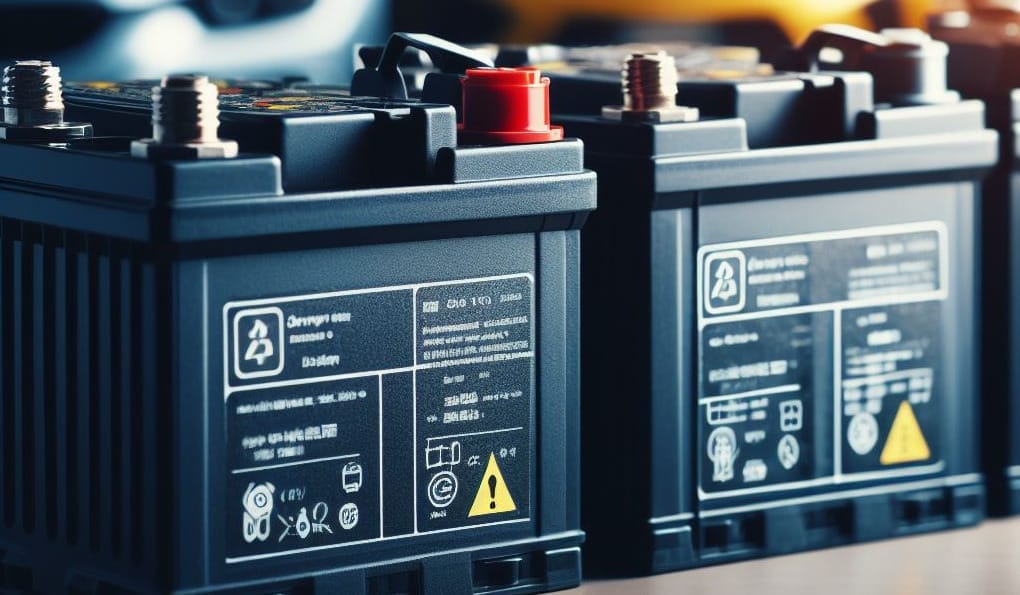
When powering up your DIY electronics project, understanding how to wire batteries in series can be a game changer. This simple wiring technique increases the overall voltage output – pretty much ‘powering up’ your power supply!
It’s not rocket science, but you’ll want to get it right.
Key takeaways: Wiring batteries in series safely.
- Ensure all your batteries have consistent voltage and capacity.
- Organize your batteries neatly on an insulating surface.
- Connect one battery’s positive terminal to the next’s negative terminal.
- Continue connecting all batteries in this series pattern.
- Link the final terminals to your device and enjoy the powered-up results!
In this article, we’re tackling everything from the basics of battery wiring to safety tips and troubleshooting advice. By the time we’re done, you’ll have all the know-how you need to wire batteries in series like a pro.
Let’s get started!
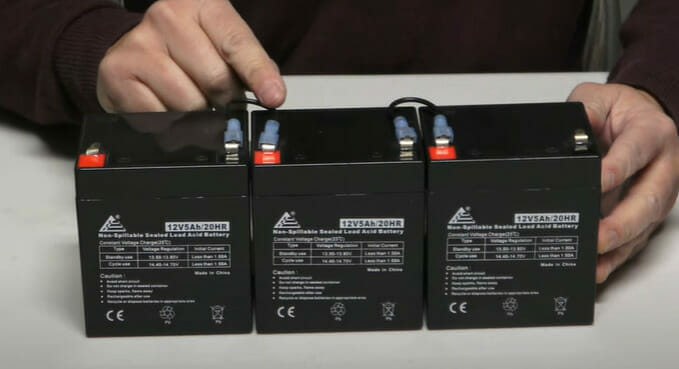
What Series Wiring Means
When discussing series wiring, I’m referring to connecting one battery’s positive terminal to another’s negative terminal. This configuration essentially increases the voltage while keeping the current (measured in amps) consistent.
But here’s something crucial to remember: While this setup boosts your voltage, it doesn’t increase your overall capacity or run time – that stays constant across all your batteries.
Necessary Materials and Tools
Before diving into the process, gathering all the necessary materials and tools is crucial.
- Batteries: You’ll need at least two batteries of the same voltage. This is because when wiring batteries in series, the voltage multiplies while the capacity remains unchanged.
- Battery Holders: Holders help keep your batteries secure during operation. They must match your battery type and size.
- Wires: Get some quality wires that can handle the combined voltage of your batteries.
- Wire Stripper: This tool helps expose wire ends for connection.
- Soldering Iron & Solder: Soldering is an excellent option for a more permanent connection.
Safety Precautions
When it comes to wiring batteries in series, there’s one thing I can’t stress enough: SAFETY FIRST. It’s not just a cliché phrase; it’s your lifeline when dealing electricity.
Let me explain some important precautions that will keep you safe and sound.
- Always wear protective gear: We’re talking about gloves and safety glasses here, folks. Batteries can leak acid, which can cause severe skin burns or eye injuries if you’re not careful. So don’t skimp on the protection!
- Battery Polarity: You must be certain that you’ve identified your positive and negative terminals correctly before connecting.
- Battery Compatibility: Always use batteries of the same type and rating when wiring together.
- Avoid Mixing Old and New Batteries: Combining old and new batteries can reduce overall efficiency. There’s also a risk of overloading and damaging the older battery.
- Avoid Loose Connections: Ensure all connections are tight and secure. Loose connections can cause erratic performance or become a fire hazard.
5-Step Guide: Wiring Batteries in Series
Let’s dive right into it. Wiring batteries in series isn’t as daunting as it might seem. Now, let’s move on to the actual steps.
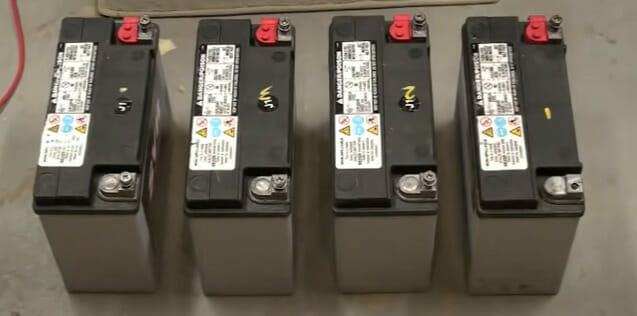
Step 1: Matching Batteries
Always ensure all your batteries are twinning – same voltage and capacity.
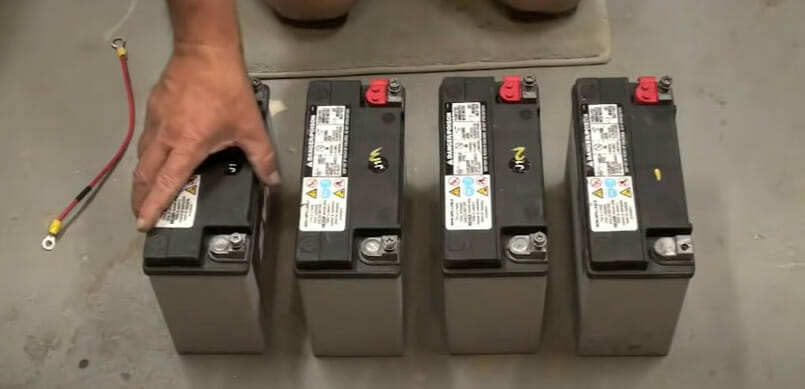
Step 2: Lay them Out
Place those batteries side by side on a non-conductive mat.
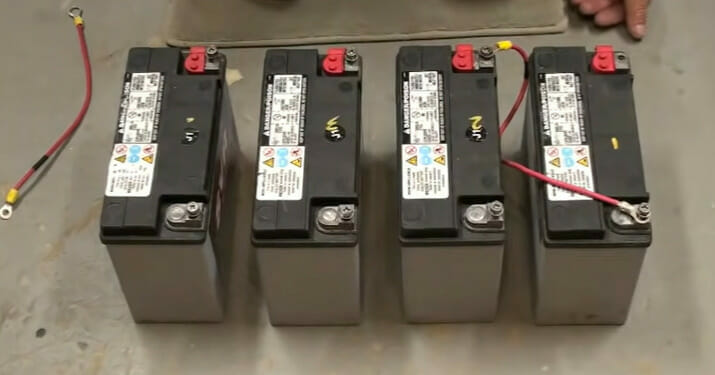
Step 3: Making Connections
The positive terminal of one to the negative of the next – just like fitting puzzle pieces together. Make sure it’s snug! Loose wires? Not on our watch!
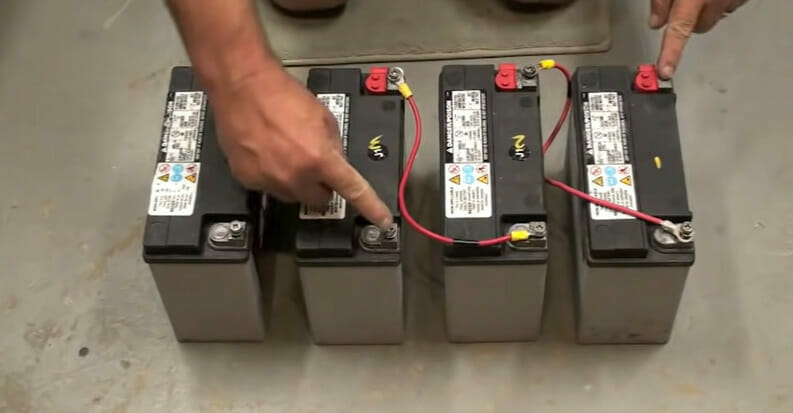
Step 4: Keep the Chain Going
Keep that connection chain with the rest of your batteries, increasing that voltage with each link.
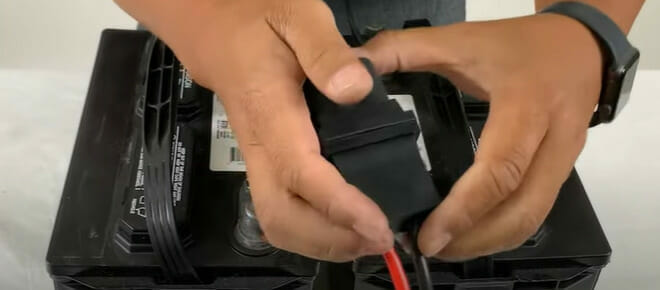
Step 5: Final Touches
Connect them to whatever device you’ve got, and you’re energized!
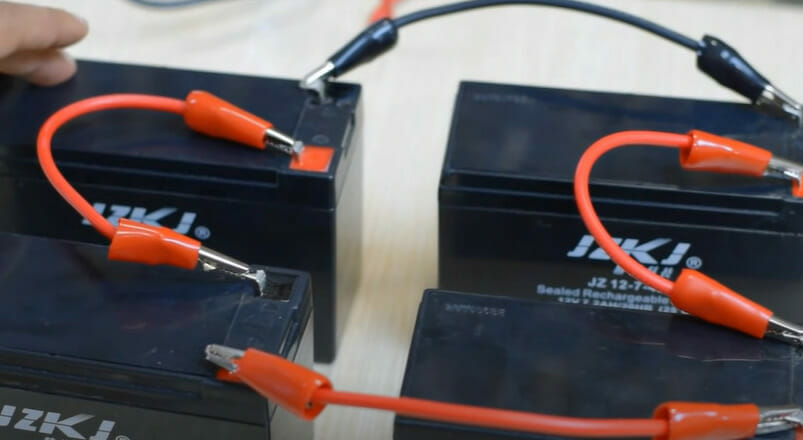
Advantages and Disadvantages of Series Wiring
Let’s dive right into the advantages and disadvantages that series wiring brings to the table.
| Advantages | Disadvantages |
|---|---|
| Boosted Voltage: Wiring batteries in series increases the overall voltage while keeping capacity constant. | Single Point Failure: If one battery fails in a series setup, the entire system is compromised. |
| Simplicity: The wiring process is direct and easy to implement, similar to connecting dots. | Imbalanced Discharge Rates: Some batteries might bear more load than others, leading to unequal wear and possible premature failure. |
| Cost-Efficiency: Achieve higher voltage without buying a single higher-voltage battery, which can be costlier. | Consistency Requirement: Batteries in series should have the same capacity and charge level to function optimally. Using dissimilar batteries can lead to inefficiencies. |
| Compactness: Series wiring allows for higher voltage within the same footprint, saving space. | Complex Monitoring: As batteries are connected in series, monitoring individual battery health becomes more intricate. |
Maintenance and Long Term Care
- Regular Inspections: Every month, or even more frequently depending on use, inspect your batteries for any signs of wear, leakage, or corrosion. Check the wires and connections for any signs of fraying or damage.
- Clean Terminals: Battery terminals can accumulate corrosion over time, reducing efficiency. Use a mix of baking soda and water to clean any corrosion, followed by a thorough wipe-down with a dry cloth.
- Balanced Charging: When charging batteries wired in series, use a balanced charger designed for series configurations. This ensures each battery gets an equal charge, preventing imbalances in voltage and capacity.
- Avoid Deep Discharges: Don’t drain your batteries completely. Deep discharges can harm the battery life. Instead, try to recharge them when they reach about 20% capacity.
- Storage: If you don’t use your series-wired batteries for an extended period, store them in a cool, dry place. Also, it’s advisable to store them at about 50% charge.
- Temperature Management: Extreme hot and cold temperatures can adversely affect battery performance and lifespan. Try to keep your batteries at room temperature. If the batteries become too hot to touch, stop using them immediately and allow them to cool.
- Regular Voltage Checks: Use a multimeter to measure the voltage of each battery individually. If one battery shows a significantly lower voltage than the others, it may be time to replace it.
- Update Connections: After prolonged use, the wire connections may degrade. Ensure all soldered joints are intact, and replace worn-out connectors.
- Rotate Batteries: Every once in a while, especially if you notice disparities in battery performance, rotate the position of the batteries. This ensures that no single battery consistently bears the most load, leading to more even wear and tear.
- Avoid Mixing: Never mix old batteries with new ones in a series configuration. The older batteries might not have the same capacity as the newer ones, leading to imbalances and reduced overall performance.
- Safety First: Always remember that damaged batteries can be hazardous. If a battery is bulging, leaking, or showing any signs of damage, replace it immediately. Also, never try to open or repair a battery yourself.
Potential Issues and Solutions
No matter how carefully you plan, there’s always the potential for a hiccup or two when wiring batteries in series. Don’t worry; I’m here to help you navigate common issues and their solutions.
| Issue | Description | Solution |
|---|---|---|
| Decreased Battery Life | Wiring batteries in series can lead to decreased battery life. The weakest battery will drain faster than the others, causing imbalance and premature failure. | Regularly check your individual battery voltages. If there’s a significant difference, replace the weaker ones promptly. |
| Overheating | It can cause severe damage to your batteries and even pose a safety risk. | Keep an eye on the temperature while using your setup. Consider adding ventilation or cooling systems if overheating becomes an issue. |
| Incorrect Wiring | Incorrect wiring is a common mistake that can cause serious problems like short-circuiting or damaging equipment. | Incorrect wiring is a common mistake that can cause serious problems like short-circuiting or damaging equipment. |
| Mismatched Battery Types | Using different types or brands of batteries together can result in uneven performance and potential damage. | Ensure all batteries in the series are of the same type, brand, and age for consistent performance. |
| Insufficient Voltage | The total voltage might still be insufficient for the intended application, even with series wiring. | Ensure the combined voltage of the series meets the requirements of the device or application being powered. |
| Excessive Voltage | Too much voltage can damage devices or systems connected to the batteries. | Be certain the combined voltage doesn’t exceed the safe operating voltage for connected devices or systems. |
| Corrosion at Connection Points | Corrosion can develop at terminals, affecting the quality of the connection and reducing efficiency. | Regularly inspect and clean battery terminals. Use anti-corrosion sprays or washers to protect connections. |
Frequently Asked Questions
Q: Why would I want to wire batteries in series?
A: Wiring in series is often done to increase the voltage to meet the requirements of a specific device or application’s requirements without buying a higher voltage rating battery.
Q: Can I mix and match different brands or types of batteries in series?
A: It’s generally not recommended. Different brands or types can have varied characteristics, resulting in uneven performance, decreased efficiency, or damage.
Q: How can I ensure my setup is safe when wiring batteries in series?
A: Always wear protective gear, work in a well-ventilated area, use compatible batteries, and double-check connections. Regularly inspect for signs of wear or damage.
Q: What’s the difference between wiring in series and wiring in parallel?
A: Wiring in series increases voltage but keeps capacity constant. Wiring in parallel, on the other hand, increases capacity while keeping voltage constant.
Q: Can I wire batteries in series indefinitely to keep increasing the voltage?
A: Technically, you can keep adding batteries to increase the voltage, but there’s a practical limit. Too much voltage can be dangerous and damage connected devices or systems.
Q: How do I check if I’ve wired my batteries correctly in series?
A: You can use a multimeter to measure the combined voltage. It should equal the sum of the individual battery voltages.
Q: Is there a limit to how many batteries I can wire in series?
A: With no strict limit, you should consider the total voltage, the application’s requirements, and safety factors. The more batteries, the more complex the management and monitoring.
Q: Do I always need to solder connections when wiring in series?
A: Soldering provides a more permanent and secure connection, but it’s not always necessary. You can also use battery holders, clamps, or connectors. Just ensure connections are tight and safe.
Q: Can wiring in series affect the lifespan of my batteries?
A: Yes, if there’s a significant imbalance among the batteries (like a mix of old and new batteries), it can lead to uneven discharging, which can reduce the lifespan of the batteries.
Q: What happens if I accidentally mix up the connections and don’t connect positive to negative?
A: Connecting positive to positive or negative to negative doesn’t increase voltage and essentially treats the batteries as if they’re in parallel. It might not harm the batteries, but the setup won’t work as intended.
References
Website Resources:
- All About Circuits. https://www.allaboutcircuits.com/
- BatterySpace.Com. https://www.batteryspace.com/
- The Electrochemical Society (ECS). https://www.electrochem.org/
Video Resources:
ASD Electrical & Electronics Project’s
Michael Sewanaku
DIY Potentials: Projects & Ideas
Newport
www.Inspectorbots.com

